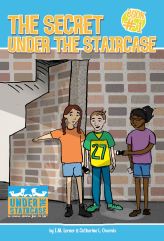This past Saturday three of my fellow critique group members and I visited the exhibit booths at the ALA Conference. Although none of us are librarians, we felt this would be a beneficial field trip from a writer’s perspective since we could see the books coming out in the fall for many big and little publishing houses. It was also an excellent way to meet valuable contacts that we may not otherwise have gotten to know.
This was my first time visiting such an event for this industry. The last time I went to anything even remotely similar was almost 20 years ago when I was involved in the film industry.
To be honest, I was a bit nervous. I didn’t know what to expect or how to approach any of the people in the booths. Thankfully we had our veteran author and friend, Nancy I. Sanders, with us. She skillfully and confidently walked up to people, introduced us as members of a local writer’s group, and then proceeded to ask about their line of books. This led to talks about their needs (or lack thereof), and about their submission policies. We met sales reps, editorial staff, and publishers. There are even a few houses who I will definitely contact with an idea in the next few weeks.
Conferences are a great way to see the needs of an industry. Even if you just visit the exhibits like we did, you will walk away with a better understanding of the market, and perhaps a few leads that you would never have gotten through e-mail or snail mail. That one-on-one contact makes a world of difference.
Filed under: 5584 | Leave a comment »









